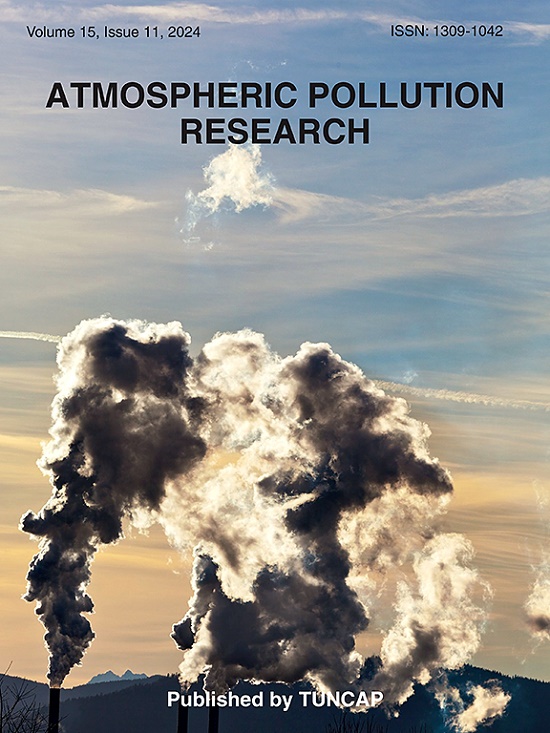孟德尔随机化研究支持空气污染物对认知功能的因果影响
IF 3.5
3区 环境科学与生态学
Q2 ENVIRONMENTAL SCIENCES
引用次数: 0
摘要
观察性研究已经将空气污染物与认知障碍联系起来,尽管因果关系尚未确定。本研究采用双样本孟德尔随机化(MR)分析来评估暴露于PM2.5、PM10、NO2和NOx对认知功能的因果影响。该研究提取了8个与PM2.5相关的单核苷酸多态性(snp), 22个与PM10相关的snp, 7个与NO2相关的snp和8个与NOx相关的snp作为欧洲祖先的遗传变异。MR估计的主要方法是方差逆加权(IVW)。研究结果表明,暴露于PM2.5会导致在Trail Making Test中的表现较差(beta = 0.24, 95% CI: 0.01至0.47,P = 0.04)。接触氮氧化物与流体智力下降有关(β = - 0.88, 95% CI: 1.42至- 0.34,P = 0.002)。此外,氮氧化物暴露的每一个标准差增加都与符号数字替换(SDS)测试中正确匹配次数(beta = - 0.39, 95% CI: 0.73至- 0.05,P = 0.02)和尝试匹配次数(beta = - 0.40, 95% CI: 0.74至- 0.05,P = 0.02)的减少以及输入值所需时间的增加有关(beta = 0.41, 95% CI: 0.06至0.76,P = 0.02)。此外,PM10暴露与阿尔茨海默病风险呈正相关(OR = 2.15, 95% CI: 1.14至4.03,P = 0.02)。这项研究表明,PM10与阿尔茨海默病的风险有因果关系。从基因上看,暴露在PM2.5和氮氧化物中与欧洲人的认知能力下降有显著关联。空气污染物对于制定有效的认知能力下降预防策略非常重要。本文章由计算机程序翻译,如有差异,请以英文原文为准。
Mendelian randomization study supports the causal effects of air pollutants on cognitive function
Observational studies have linked air pollutants to cognitive impairment, though the causal relationship is yet to be firmly established. This research employs a two-sample Mendelian randomization (MR) analysis to evaluate the causal effects of exposure to PM2.5, PM10, NO2, and NOx on cognitive function. This study extracted 8 single nucleotide polymorphisms (SNPs) associated with PM2.5, 22 SNPs associated with PM10, 7 SNPs associated with NO2 and 8 SNPs associated with NOx as genetic variants on European ancestry. The primary method for MR estimation utilized was inverse variance weighting (IVW). The findings indicate that exposure to PM2.5 results in poorer performance on the Trail Making Test (beta = 0.24, 95 % CI: 0.01 to 0.47, P = 0.04). Exposure to NOx is associated with a decline in fluid intelligence (beta = −0.88, 95 % CI: 1.42 to −0.34, P = 0.002). Additionally, each standard deviation increase in NOx exposure is linked to a decrease in the number of correct matches (beta = −0.39, 95 % CI: 0.73 to −0.05, P = 0.02) and attempted matches (beta = −0.40, 95 % CI: 0.74 to −0.05, P = 0.02) on the Symbol Digit Substitution (SDS) test, and an increase in the time taken to enter a value (beta = 0.41, 95 % CI: 0.06 to 0.76, P = 0.02). Furthermore, a positive association was observed between PM10 exposure and the risk of Alzheimer's disease (OR = 2.15, 95 % CI: 1.14 to 4.03, P = 0.02). This study suggests that PM10 is causally associated with Alzheimer's disease risk. Genetically PM2.5 and NOx exposure showed a significant association with cognitive decline in people of European origin. Air pollutants is important for developing effective prevention strategies for cognitive decline.
求助全文
通过发布文献求助,成功后即可免费获取论文全文。
去求助
来源期刊

Atmospheric Pollution Research
ENVIRONMENTAL SCIENCES-
CiteScore
8.30
自引率
6.70%
发文量
256
审稿时长
36 days
期刊介绍:
Atmospheric Pollution Research (APR) is an international journal designed for the publication of articles on air pollution. Papers should present novel experimental results, theory and modeling of air pollution on local, regional, or global scales. Areas covered are research on inorganic, organic, and persistent organic air pollutants, air quality monitoring, air quality management, atmospheric dispersion and transport, air-surface (soil, water, and vegetation) exchange of pollutants, dry and wet deposition, indoor air quality, exposure assessment, health effects, satellite measurements, natural emissions, atmospheric chemistry, greenhouse gases, and effects on climate change.
 求助内容:
求助内容: 应助结果提醒方式:
应助结果提醒方式:


